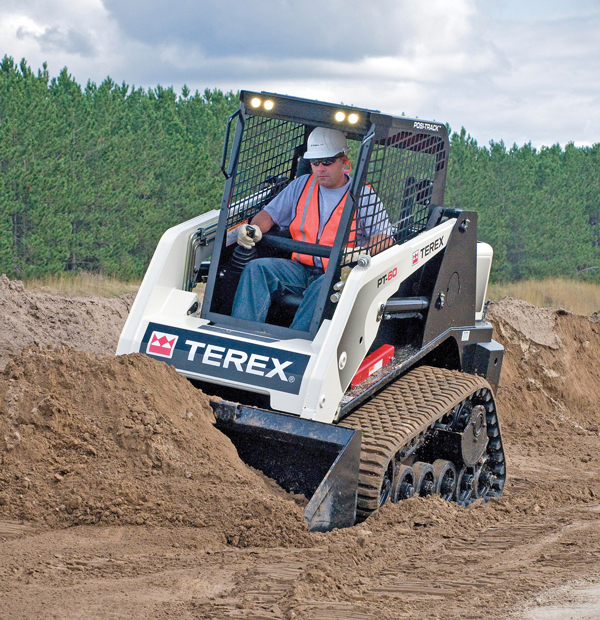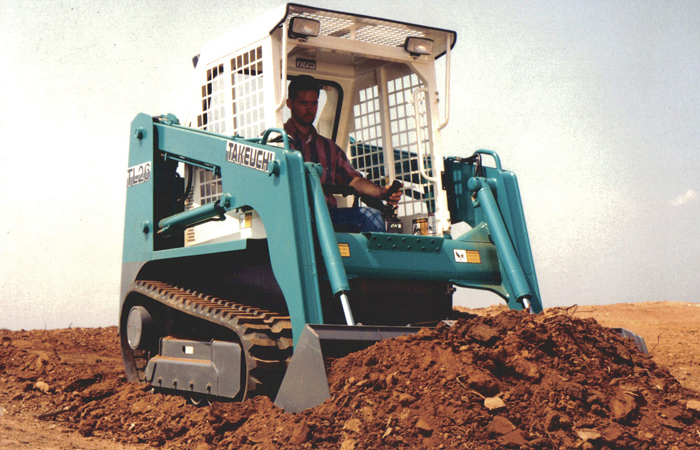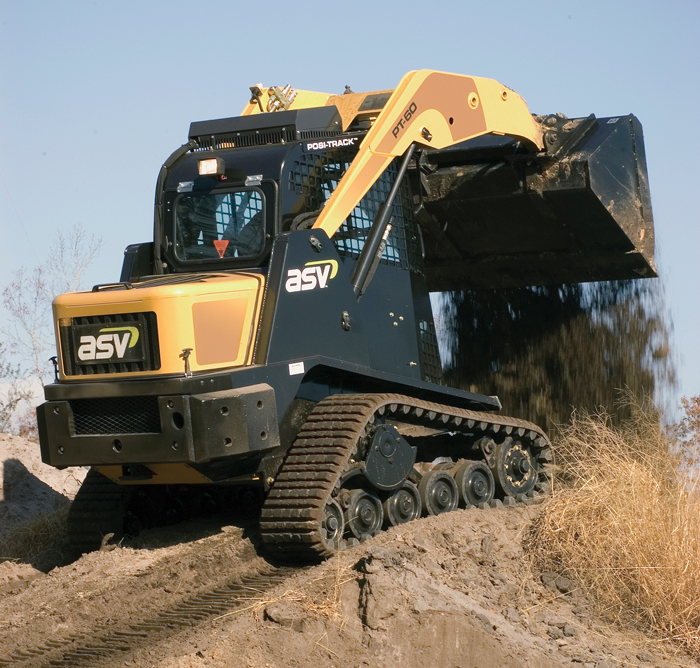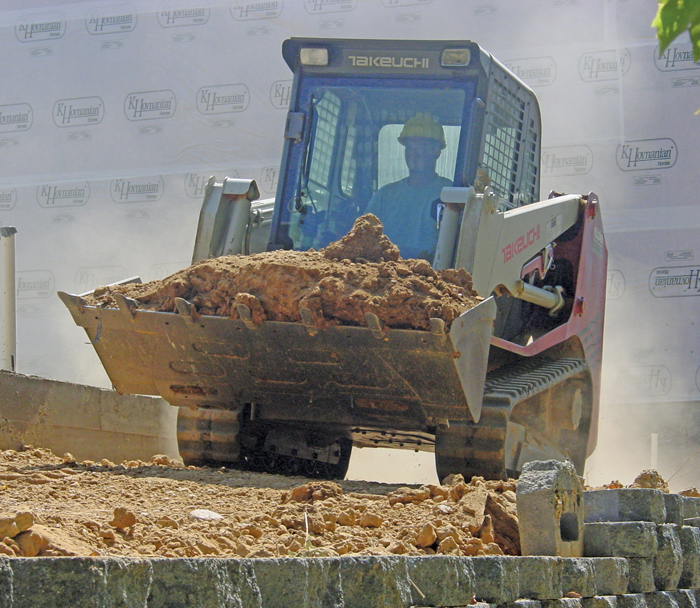The Tale of Two Track Loaders
The skid steer has been a principal equipment category for compact equipment for 50 years. But as maneuverable as zero-turn skid steers are, their vulcanized wheels still have trouble maintaining speed, grip and traction in wet, sandy and precarious project site conditions. So in the late 1980s, ASV Inc. and Takeuchi began to design small loaders with a dedicated track system instead of tires. They called them compact track loaders, all-surface loaders or rubber-tracked loaders (people today also call them multi-terrain loaders or just track loaders). Compact track loaders look and, for the most part, work like skid steers, except for their unique dedicated track undercarriage. Their history is also just as rich and includes two big names in construction today — Terex and Takeuchi.
 ASV Evolves into Terex
ASV Evolves into Terex
Terex compact track loaders have a long, rich history in the construction market, dating back to 1983 when the predecessor brand, ASV, was founded by Gary Lemke, one of the top snowmobile dealers in the United States, and Edgar Hetteen, founder of Polaris Industries and Arctic Enterprises — leading snowmobile manufacturers, in Marcell, Minn.
ASV began by designing and building machines that ran on a rubber track system. The Track Truck, a year-round, all-terrain transport used by utility companies and ski resorts, was the first machine the company produced. In 1987, based on the success of the Track Truck, ASV engineers developed a compact loader with a track system, and the compact track loader market was born.
In March of 2008, Terex Corp. successfully completed the acquisition of ASV and rebranded the popular compact track loader line under the Terex name, part of the company’s construction business segment. Unlike many competitors who mount a rubber track on an existing skid steer chassis, Terex designs its compact track loaders to run on a suspended rubber track undercarriage. Terex rubber tracks are made from a lightweight, pliable, yet tough composite material — no steel is used anywhere. Used in conjunction with the company’s patented Posi-Track undercarriage system, the Terex rubber-track design increases traction, operating speeds and track life, resulting in higher productivity.

Today, Terex has one of the largest lines of compact track loaders with seven distinct models from 30 to 100 hp with a variety of options and attachments that best fit specific applications for most customer needs.
Amber Reed is a PR consultant with Signature Style PR, based in Huntersville, N.C.
 Takeuchi Excavators Evolve into Tracked Loaders
Takeuchi Excavators Evolve into Tracked Loaders
Akio Takeuchi, who continues to serve as president and chairman of the Board of Directors today, founded Takeuchi Mfg. in 1963. With humble beginnings as an OEM supplier, Takeuchi quickly built a reputation as a high-quality supplier for construction equipment.
In the 1960s, Japan was in the middle of an unprecedented industrial development period. With the world’s highest literacy rate and acclaimed high education standards, Japan was quickly becoming one of the world’s most technologically advanced economies. A home construction boom in Japan in the 1960s created a high demand for earthmoving and site work. At the time, excavators where too large to be used for small-scale landscaping and residential construction — Mr. Takeuchi realized that a nimble hydraulic machine could save countless man-hours on small construction sites digging foundations and trenches. He saw a need and developed the world’s first compact excavator in 1970.
This 2-ton excavator, called the TB1000, was equipped with a boom swing mechanism capable of 360-degree rotation. It was produced on an integrated production line that marked the company’s first step away from its role as a parts supplier and toward its role as a full-fledged manufacturer of construction equipment. Compact excavators below 6 tons created new demand not only in Japan, but in other global markets as well. By 1978, Takeuchi was exporting their compact excavators overseas. In 1979, Takeuchi’s first foreign sales subsidiary was established in Atlanta, Ga. — Takeuchi Mfg. U.S., Ltd.

Clay M. Eubanks is president of Takeuchi U.S., based in Pendergrass, Ga.

 ASV Evolves into Terex
ASV Evolves into Terex  Takeuchi Excavators Evolve into Tracked Loaders
Takeuchi Excavators Evolve into Tracked Loaders 



Comments are closed here.